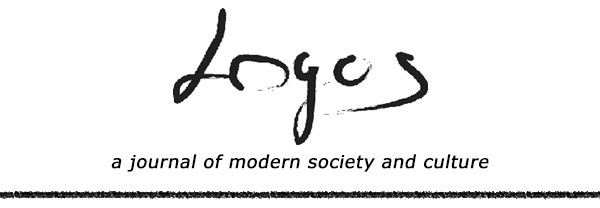Remembering P. Adams Sitney
I do not know exactly when I first “met” P. Adams Sitney. He was present at Yale University, when he organized the world premiere of Stan Brakhage’s four-hour silent film, The Art of Vision, screened there over several days, likely early 1966. I came to New Haven to see it. I was 18. There was also a private screening; Brakhage had brought some other films with him, including Fire of Waters and the first ten of his 8mm Songs. I was able to talk to Brakhage a bit, and asked him a question or two, but I don’t think I spoke to P. Adams.
We did have some phone conversations a few years later related to bringing Brakhage and Peter Kubelka to show their films at the MIT Film Society, which I had co-founded. It was only when Sitney began to teach at NYU Cinema Studies in the early 1970s, where I had become a graduate student, that we began to talk. His courses were always excellent, and the scope of his erudition gradually emerged, uncolored by the slightest bit of performative display. If we were discussing a text in an English translation, he would usually have the original with him, and only when a point of interpretation was raised would he elucidate nuances of meaning in the German word we were puzzling over.

Henri Langlois and P. Adams Sitney in Jonas Mekas’ He Stands in the Desert Counting the Seconds of His Life
A few years later, after he had resigned in anger from NYU (“If any student wants to get in touch with me, tell them I have gone to Tierra del Fuego”), I was able to bring him to the School of the Art Institute of Chicago, where I had moved to teach. He flew in from New York once a week. Discontented with traditional academia, he enjoyed the quirkiness of art students, once mentioning, after he began to also teach at Princeton, that he felt he fit in a bit too easily there.
The 1970s and 1980s were, for some of us, a troubled time in film academia. Most colleges had not taught cinema at all in prior years, except for those few that had taught filmmaking. Now nearly every college was starting a film department and hiring film faculty. Yet the existing methods for discussing film were, to put it charitably, rather unsophisticated, as evidenced by some of the academic papers published in the 1960s. Many professors knew this was a problem. Some understood that that they were part of the problem. There were methods established in fields such as art history and comparative literature; not so in film studies. So there was an urgent search for approaches, and many young academics borrowed from then-current French theory, sometimes applying ideas rather mechanically, even incoherently.
P. Adams once told me about delivering a paper on Dziga Vertov at a conference. When he finished, one academic in the audience commented something like, “I was interested in your paper, but I was unclear as to which methodology you were using.” He replied, “My methodology is known as thinking about the subject.”
That “methodology” is evident in his writing. Best known for attending to the neglected field of “experimental” or avant-garde film, he brought insights from a variety of disciplines, including rhetoric, art history, and comparative literature, and his choice of which to draw on always seemed based on what was most appropriate to the points he wanted to make about the films under discussion. Unlike many film academics, he took films as his primary text. His writing about a film might combine some description, careful close analysis, statements by the filmmaker, comments by other critics, and related insights from other fields, and he could stitch these together rather beautifully. The combination of his intelligence and knowledge and his focus on the films themselves makes his writing and teaching of exemplary value.
While he rarely praised the films he wrote about, it was also evident from his writing that he chose them, and approached them, out of love. Other academics often chose films to write on for a variety of reasons other than aesthetic merit, and of course it is legitimate to do so. Still, when Sitney wrote about filmmakers such as Brakhage and Kubelka, he made an implicit recognized of their greatness as artists part of his writing. Of course, he also knew that they had almost no reputations — it was, indeed, his writing that helped give them one — at a time when to the uninitiated their films could seem not only intellectually obscure but difficult to view: “a headache” from their rapid movements and editing was a common complaint in those early years. Sitney was friends with both, knew that they were often without funds, and so felt that it was important to make the case for their work that he already believed in, and did so, brilliantly.
There was a fundamental modesty to Sitney’s character and thinking that may not have been apparent at first. He wrote in a clear and authoritative voice. He enjoyed talking about his ideas, and did so forcefully, sometimes at length. Listening to a comment he found lacking, he could be nastier than in the example I mentioned above — though I never saw any nastiness directed at a student. On the first day of a course he taught on Brakhage, who aside from being a prolific filmmaker wrote on film extensively, Sitney said something like, “There are probably no important insights into Brakhage that he has not already stated.” Since Sitney had already written on Brakhage himself, had broken bitterly with him ending their friendship years earlier, and could be quite critical of Brakhage’s personal character, I was greatly impressed. More importantly, as someone who has been involved with and written on Brakhage’s films for most of my life, I find Sitney largely correct in this.

It is not widely known that Sitney was not “only” a film professor. He had a deep knowledge of, and, dare I say it, love for, philosophy, literature, visual art, architecture, and classical music, and found ways to teach many of these at Princeton. Late in his life he spent some weeks traveling in France to visit Romanesque cathedrals. In his last few years he was rereading all of Plato, for pleasure. Visiting Istanbul, I discovered an amazingly great sixteenth century architect, Mimar Sinan, and spent wonderful hours at two of his mosques. I later learned that P. Adams had been to more than ten of them. Acutely aware of the problems of translations, he could read in ancient Greek, Latin, French, German, and Italian — and, for all I know, more.
The scholar I knew as a friend was not someone to make greatest film lists, or lists of any kind. He once suggested Brakhage, Dreyer, and Tarkovsky as among the very greatest of filmmakers. Ten years ago, I thought I was taking a risk by asking whether he could tell me his favorite writers. He answered without hesitation: Homer, Plato, Virgil, Dante, Shakespeare, Wordsworth, Balzac, Whitman, Melville, Tolstoy, Dostoevsky, and Proust. Noting some omissions, I cautiously inquired, “What about Milton?” “Milton is very great.” “What about Joyce?” “Joyce is very great.”
The reader will note that his is not the list one might expect from a professor specializing in avant-garde film. It is also a list that is unfashionable today. It’s perhaps not really complete either; he once called George Eliot’s Middlemarch his favorite novel. I risk revealing my own unfashionableness by saying that had I met Sitney knowing nothing of cinema, I would take the film recommendation of a lover of Homer and Shakespeare with particular seriousness. He cherished what increasingly seem to be regarded as older values: nuanced thinking, complexity of argument, powerfully constructed forms.
I occasionally reflected on his list. Eventually, I asked him about the criteria that would admit Shakespeare and Proust and exclude Milton and Joyce. His immediate answer: “Depth of humanity.” My own bias is toward the beauty of form as something impossible to translate, though then I try to do so. I had been looking forward to discussing all this with him, but then he died. Certainly he would have defended his view admirably. That certainty is reinforced by the many varieties of human experience he elucidated in the films he wrote on.

